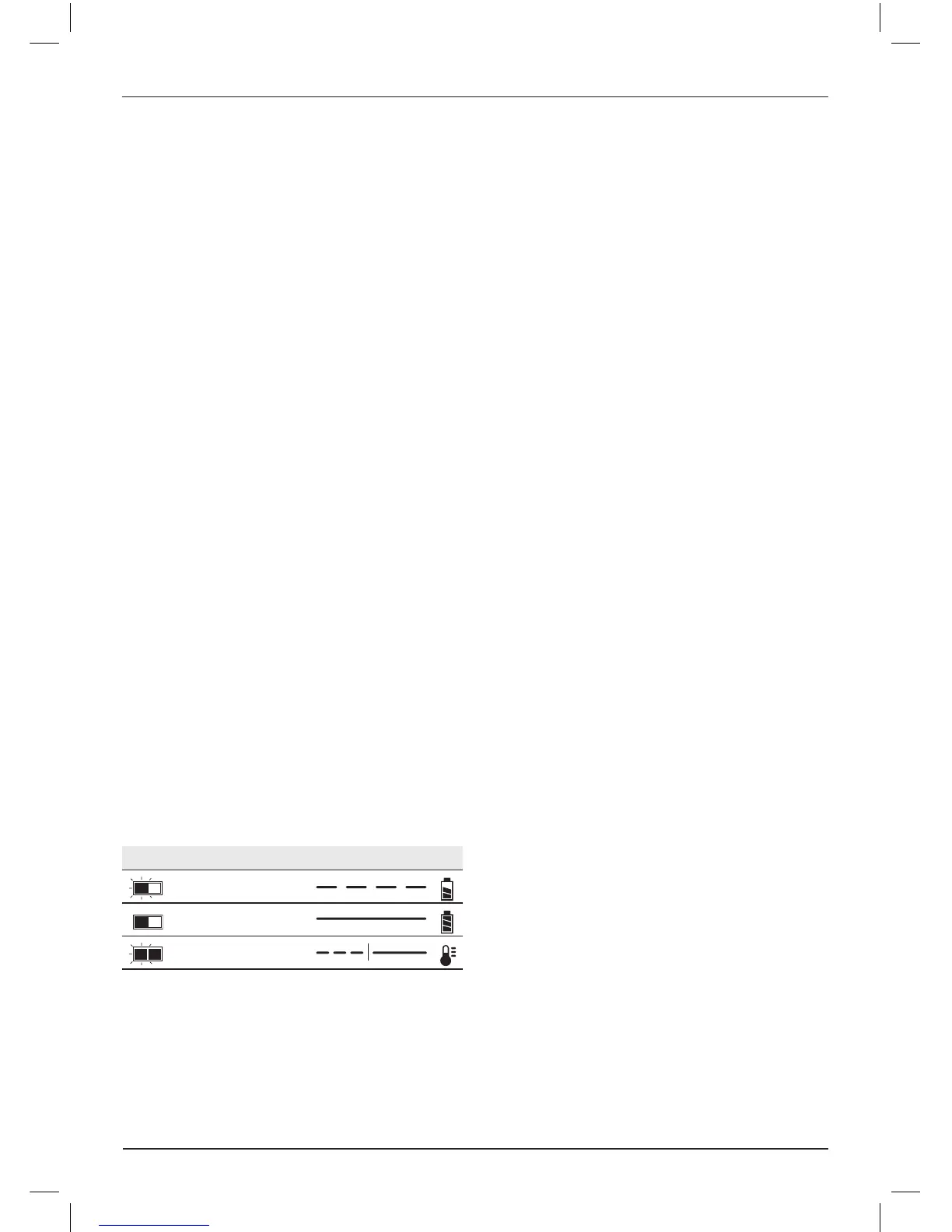17
English
The compatible charger(s) will not charge a faulty
battery pack. The charger will indicate faulty battery
by refusing to light or by displaying problem pack or
charger blink pattern.
NOTE: This could also mean a problem with a
charger.
If the charger indicates a problem, take the charger
and battery pack to be tested at an authorised
service centre.
HOT/COLD PACK DELAY
When the charger detects a battery pack that is too
hot or too cold, it automatically starts a Hot/Cold
Pack Delay, suspending charging until the battery
pack has reached an appropriate temperature. The
charger then automatically switches to the pack
charging mode. This feature ensures maximum
battery pack life.
A cold battery pack will charge at a slower rate than
a warm battery pack. The battery pack will charge
at that slower rate throughout the entire charging
cycle and will not return to maximum charge rate
even if the battery pack warms.
The DCB118 charger is equipped with an internal
fan designed to cool the battery pack. The fan will
turn on automatically when the battery pack needs
to be cooled. Never operate the charger if the fan
does not operate properly or if ventilation slots are
blocked. Do not permit foreign objects to enter the
interior of the charger.
LITHIUM-ION BATTERY PACKS ONLY
XR Li-Ion tools are designed with an Electronic
Protection System that will protect the battery pack
against overloading, overheating or deep discharge.
The tool will automatically turn off if the Electronic
Protection System engages. If this occurs, place the
lithium-ion battery pack on the charger until it is fully
charged.
Wall Mounting
DCB107, DCB112, DCB113, DCB115, DCB118
These chargers are designed to be wall mountable
or to sit upright on a table or work surface. If wall
mounting, locate the charger within reach of an
electrical outlet, and away from a corner or other
obstructions which may impede air flow. Use the
back of the charger as a template for the location
of the mounting screws on the wall. Mount the
charger securely using drywall screws (purchased
separately) at least 25.4 mm long with a screw
head diameter of 7–9 mm, screwed into wood to an
optimal depth leaving approximately 5,5 mm of the
screw exposed. Align the slots on the back of the
charger with the exposed screws and fully engage
them in the slots.
• NEVER attempt to connect two chargers
together.
• The charger is designed to operate on
standard 230V household electrical power.
Do not attempt to use it on any other
voltage. This does not apply to the vehicular
charger.
SAVE THESE INSTRUCTIONS
Chargers
The DCB118 charger accepts 18V Li-Ion XR and
XR FLEXVOLT™ battery packs (DCB180, DCB181,
DCB182, DCB183, DCB183B, DCB184, DCB184B,
DCB185 and DCB546).
chargers require no adjustment and are
designed to be as easy as possible to operate.
Charging a Battery (Fig. 1)
1. Plug the charger into an appropriate outlet
before inserting battery pack.
2. Insert the battery pack (O) into the charger,
making sure the battery pack is fully seated in
the charger. The red (charging) light will blink
repeatedly indicating that the charging process
has started.
3. The completion of charge will be indicated by
the red light remaining ON continuously. The
battery pack is fully charged and may be used
at this time or left in the charger. To remove the
battery pack from the charger, push the battery
release button (P) on the battery pack.
NOTE: To ensure maximum performance and life of
lithium-ion battery packs, charge the battery pack
fully before first use.
Charger Operation
Refer to the indicators below for the charge status
of the battery pack.
Charge Indicators: DCB107, DCB112, DCB113, DCB115, DCB118
Charging
Fully Charged
Hot/Cold Pack Delay*
* DCB107, DCB112, DCB113, DCB115, DCB118:
The red light will continue to blink, but a yellow
indicator light will be illuminated during this
operation. Once the battery pack has reached
an appropriate temperature, the yellow light will
turn off and the charger will resume the charging
procedure.

